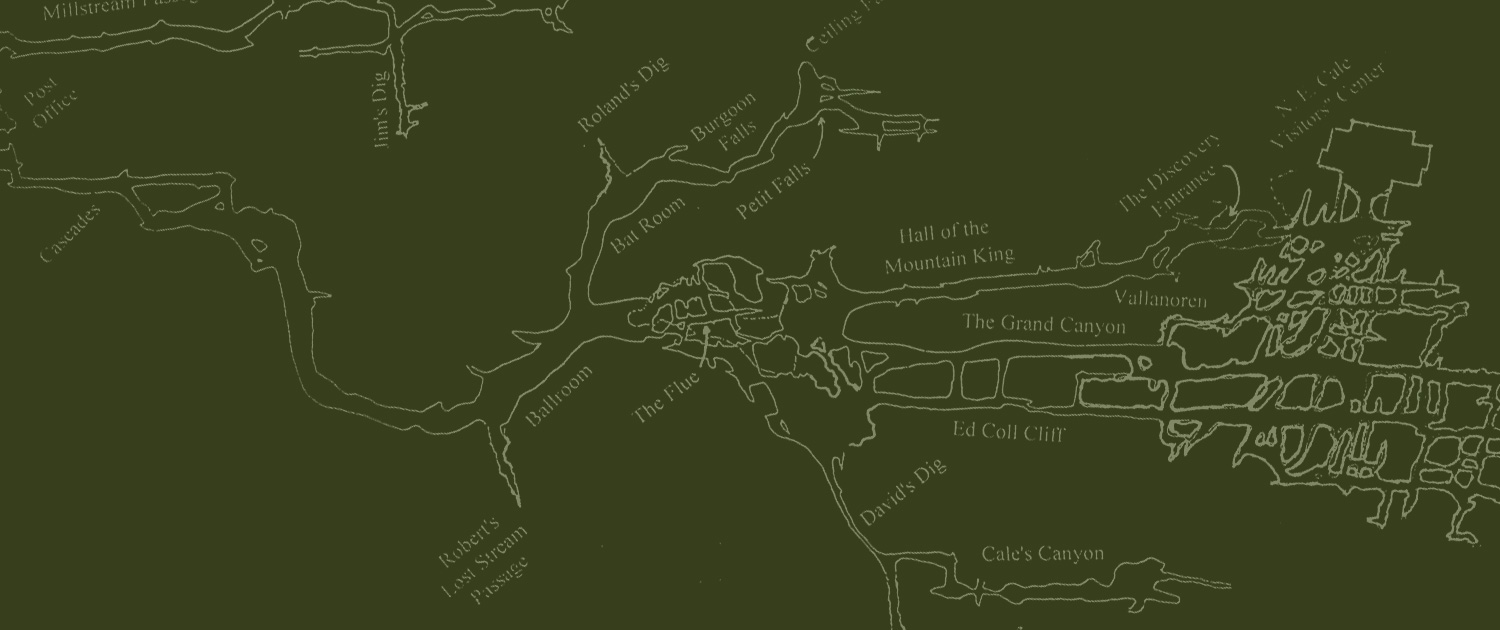Roy Cale, District Manager of A&P Food Stores in Southwestern Pennsylvania and a resident of Uniontown, heard the cave was up for sale by Mrs. McDowell . He alerted his cousin, Norman Cale, of the sale and the two formed a partnership to preserve the cave. Both men had been born and raised in Bruceton Mills, WV, a small community about thirteen miles from the famous cave. Roy had explored the cave many times, but Norman, owner of a small accounting firm, had never been in it. At first Roy’s enthusiasm to own and preserve a piece of land five miles from the nearest paved road didn’t make much financial sense to Norman, But it was love at first sight when Norman saw the cave itself.
Norman and Roy were not the only ones the cave had that affect upon. Ralph “Buzz” Bossart, a Penn State graduate in Civil Engineering, had been visiting the cave since 1921, and when he found himself unemployed due to the Depression, decided to “move” to the cave in 1933. Buzz spent the entire summer that surveying and mapping the cave. He also kept count of cave visitation (noting 1,720 visitors that summer). When Buzz finished his map he made an interesting discovery. The Cales did not own the entire cave; the huge size of the cave meant that the Cales needed to purchase much more land than the 85 acres they held. Fortunately, Norman and Roy had brought in as partners, Roy’s half-brother, Charles, and another A&P executive, Wayne Jones of Monongahela.
This partnership began buying up hundreds of acres until the cave property stood at 1030 acres. For the first time the entire cave was on one deed. The year was 1936, a fateful year for the property.
In 1936 the DC-2 was the “jumbo jet” of its day. On April 8 of that year, while on a flight from Newark to Pittsburgh, one of the worst civilian plane crashes of that decade took place only a few hundred yards from the cave’s entrance. A Trans-Western DC-2, dubbed “Sunracer” crashed, killing thirteen people. Initially surviving were the stewardess (Nellie Granger), the wife of the Mayor of Newark, and one other passenger. The latter two died days later from the crash. Nellie Granger’s long walk in search of help made her nationally famous. The crash now has two monuments. One at the crash site and one at Valley Forge Military Academy honoring several students killed in the crash. It is arguable the tragedy represents the first major crash of a modern all metal passenger plane in Pennsylvania.


